Want to make the best homemade pizza crust you can? Learn how to knead dough for pizza for a perfect crust on your homemade pie!
Years ago, I went on a journey through a book. Peter Reinhart’s American Pie transported me across Italy and America in search of the perfect pizza, and it’s a journey well worth taking.

Ever since reading that book, I’ve been working to perfect pizza recipes and techniques. From thin Neopolitan pizzas to thick deep dish pizzas, I love them all. But this is the style and recipe I use most, due to it’s extreme versatility.
And it’s almost impossible to mess up! You’ll get delicious, perfect pizzas every time, but in this post I’m focusing on how to knead dough for pizza both by hand and with an electric mixer.
How to Knead Pizza Dough by Hand
Step 1
Prepare your pizza crust according to the recipe below (or follow any recipe you’d like). Once it is all thoroughly mixed together, shape it into a ball. Once the dough has rested for 10 to 20 minutes, you’re ready to start kneading.
Step 2
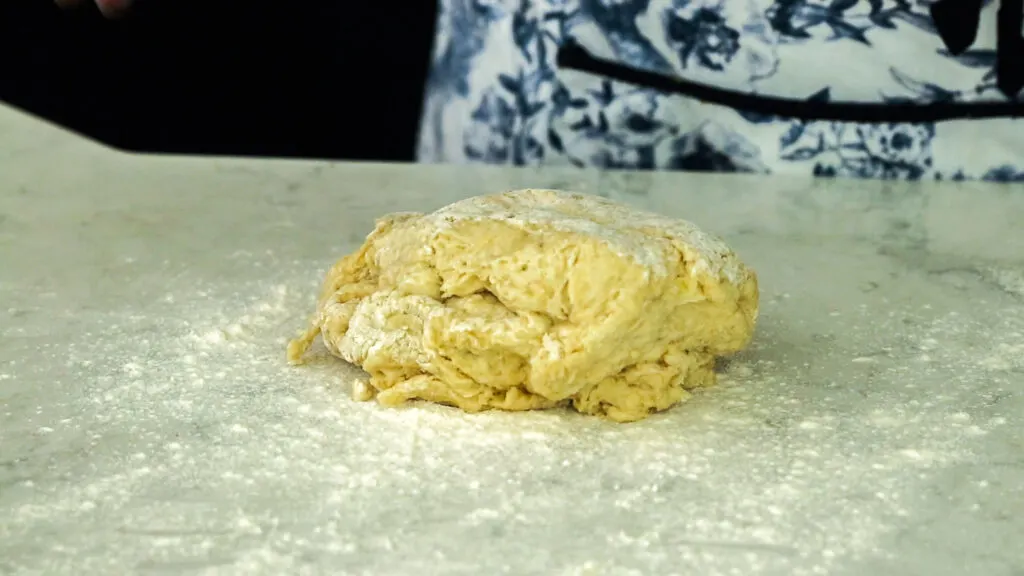
Sprinkle a clean surface (like a counter or table) with all-purpose flour, and rub some on your hands. Place the ball of pizza dough on the counter.
Step 3
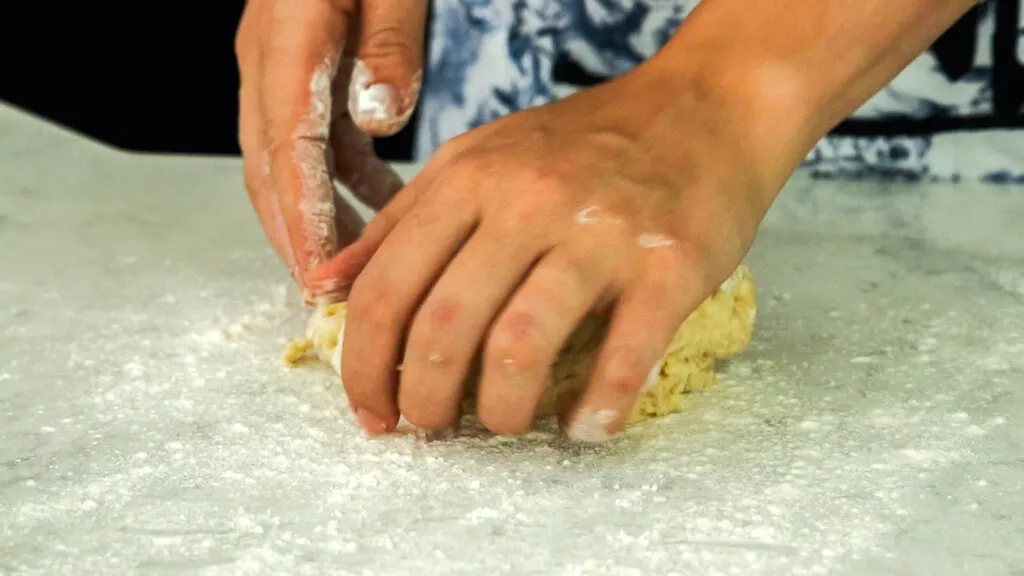
Now, you’re ready to knead with the heel of your hands. Using your dominant hand, place the heel on top of the dough on the side nearest to you. While pressing down, push the dough away from you to stretch it. This creates tension and helps build strength in the gluten strands as you knead.
Once the dough has been stretched, fold it back over and repeat the pressing and stretching. This is the basic kneading move.
Continue to knead until the dough is smooth and elastic. This means the gluten is building longer protein chains and strengthening from your kneading.
How to Knead Pizza Dough with a Mixer
If you would prefer to knead the dough with a stand mixer, you absolutely can! Use the dough hook attachment (it usually looks like a twisted “S”) to mix the dough.
After the ingredients have all come together, cover the bowl and allow the dough to rest for 10-20 minutes. Then, knead on medium speed for about 5 minutes.
After the five minutes, check to see if it’s thoroughly kneaded (see the next section for how to tell), and knead for another minutes or two if the gluten isn’t well developed.
Continue to rise and shape your pizza dough following the same steps as with hand kneading.
Kneading Pizza Dough Video
How Long Should I Knead Pizza Dough?
Wondering how to know if your pizza dough is kneaded enough? There are several ways to tell.
If kneading by hand, it will probably take about 5-7 minutes. This varies depending on your personal technique, speed, and hand strength.
For a mixer, it should take 4-5 minutes on medium speed to knead the pizza dough well.
There are several visual and textural clues that help know when dough is well kneaded. Not only should it look and feel smooth and stretchy, there are several other ways to insure that the gluten in your dough is well-developed and will give a great pizza crust.
The easiest is to shape the dough into a ball and poke it gently. If the indent left by your finger springs back immediately, the dough is ready for it’s rise time.
A more thorough way to test the dough is the windowpane test. This involves pinching a small piece of dough off of the larger ball. Using your fingers, gently stretch the dough. Hold it up to a light, and when the dough is thin enough to see the light through, look to see if the dough fibers are breaking or stretching.
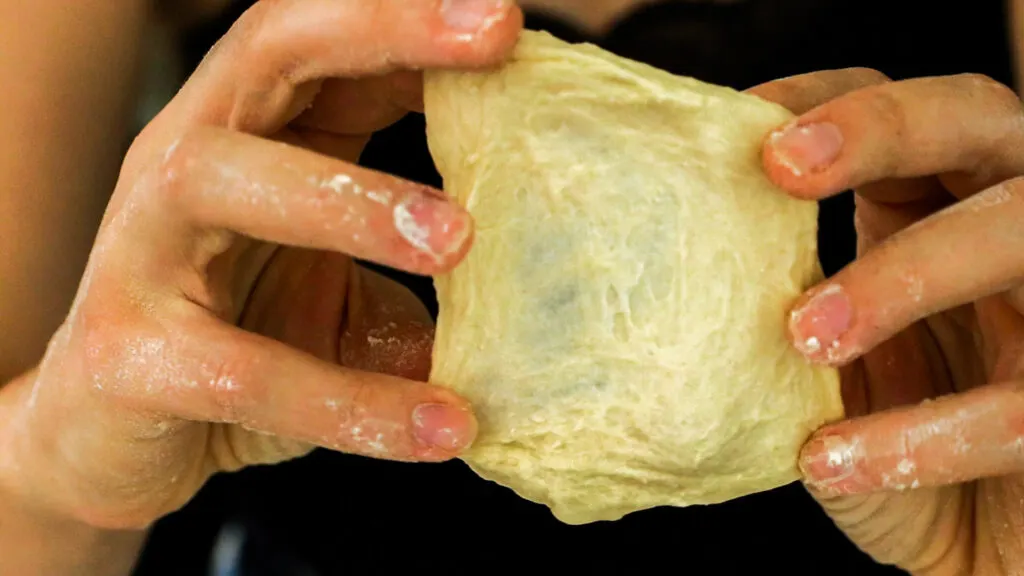
If the dough fibers are breaking, knead for another minute or so, then retest the dough. If they are stretching, it’s ready to rest and rise.
Why Should I Knead Dough?
Not sure why you need to knead? Let’s talk science!
Wheat flour contains a protein called gluten. When your dough is first mixed, the gluten protein strands are very loose and unconnected. This makes the dough look rough (or “shaggy”) and easy to break–it’s not very cohesive.

When you’re kneading dough, the stretching motion creates strength in the gluten strands, essentially making the line up and connect together. This network creates a smooth, strong dough that is stretchy and strong.
Not only does this create a smoother dough that will have a better texture when baked, it also traps air in the dough and helps it rise better.
A note on Storebought Pizza Crust
If you are working with a premade pizza crust from the store, it should have been kneaded already. If the dough seems rough, you could do a few kneads to improve the texture. However, it should be ready to shape and bake straight out of the package.
Basic Pizza Dough Recipe
This recipe is for a standard American style pizza crust. It’s a “just right” kind of crust, not too thick and not too thin.
Pizza Crust Dough Ingredients
- 2 1/2 cup (350 g) bread flour (or other high-gluten flour)
- 2 Tbsp. (25 g) sugar
- 1 teaspoon instant yeast
- 1 teaspoon sea salt
- 1/2 cup whole milk
- 2 Tbsp. olive oil
- 6 Tbsp. room temperature water
How to make Pizza Dough

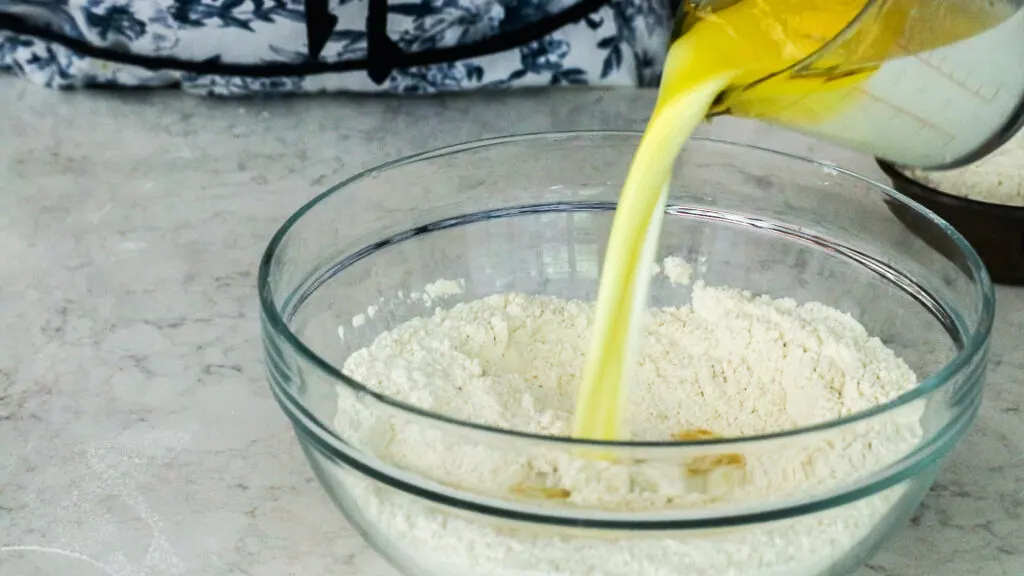
Start by adding all of the ingredients in a mixing bowl. Using a spoon, or your hand, stir until it comes together into a rough dough, for about 2 minutes.
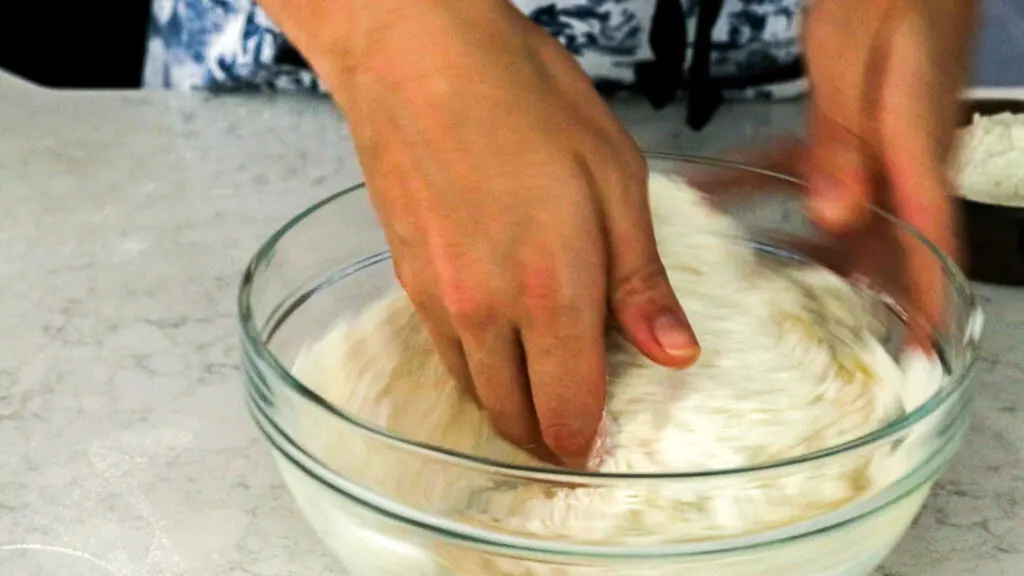
Allow the dough to rest for five minutes, then turn it out onto a well-floured surface.
Using the heel of your hand, press the dough down and away from yourself. You want to stretch the dough, not just press it down.
Fold the dough over and again, stretch it away from yourself. Repeat the step over and over.
As you knead, you’ll feel the dough become smoother and less sticky. It will strengthen and become more springy.
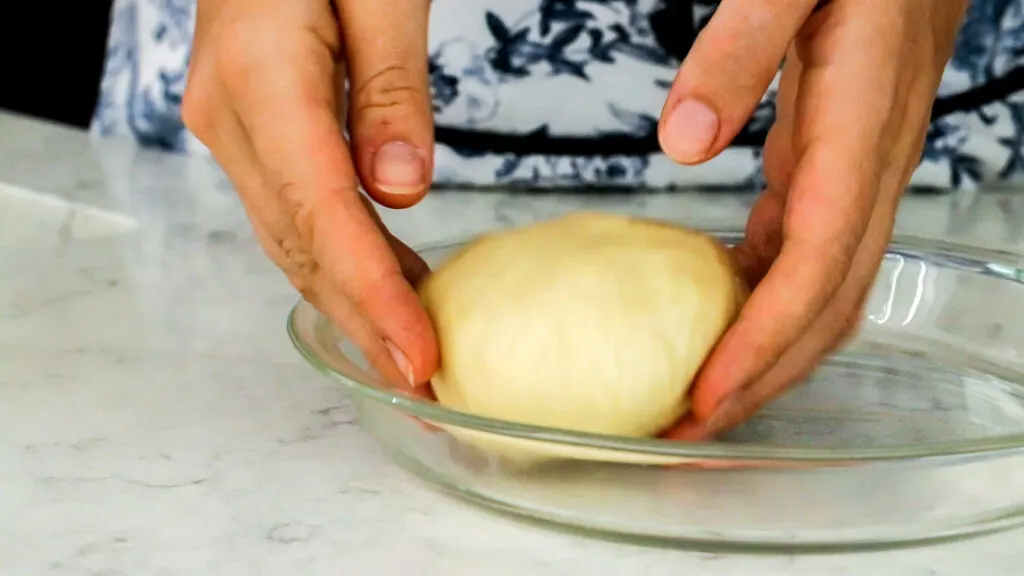
Letting the Pizza Dough Rise
Cut the dough in half and roll them both into balls. Smooth oil over each ball and set it on a plate or pan. Cover them with plastic wrap and set in a warm, draft free place.

Allow them to rise until double. This should take a couple of hours, but may take more or less time depending on the temperature of your kitchen.
Shaping the Pizzas
Before shaping the pizzas, preheat the oven to 450° with a rack placed in the middle. If you have a pizza stone, place it in the oven before preheating.
Once the pizza dough has risen, it’s ready to shape. Sprinkle a piece of parchment paper with semolina flour or fine cornmeal.
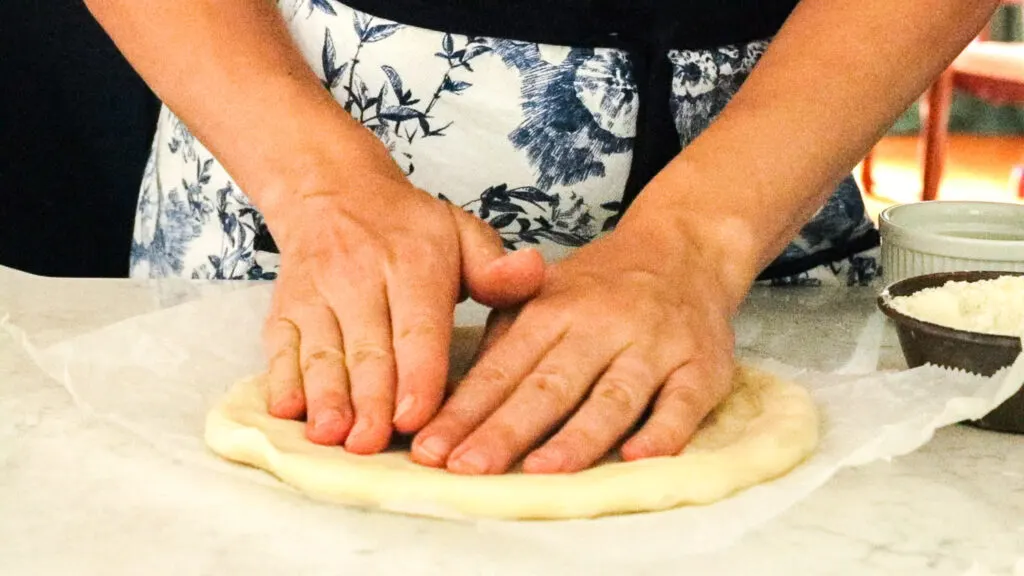
Place the pizza dough on top and begin to gently press it outward with your hands, turning it to create a circle.
When the dough begins to spring back, lift it up and drape it over your knuckles. Stretch and rotate it over your fingers to stretch it out larger.
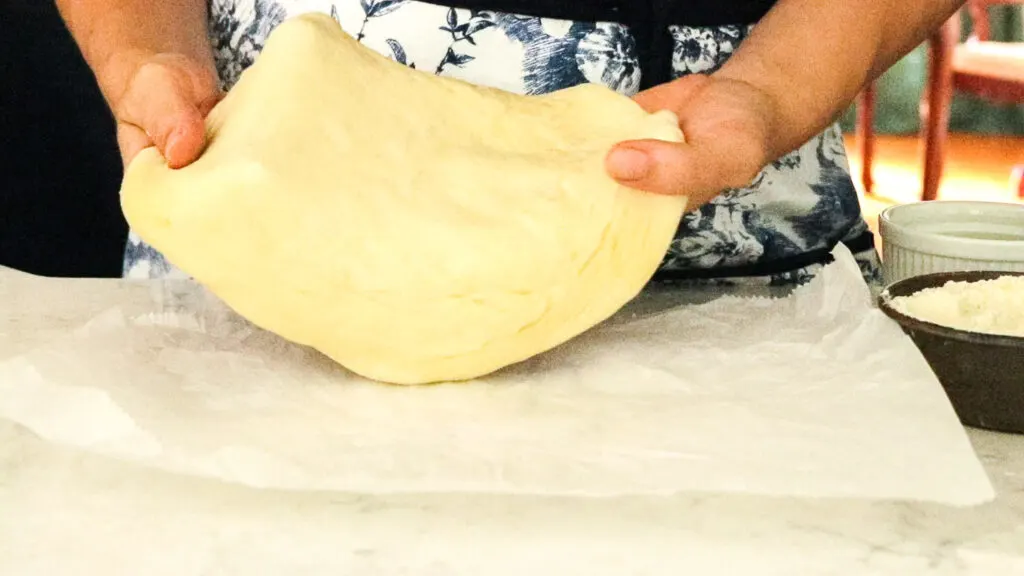
Return the pizza crust to the parchment paper and shape it to make sure it’s in a circle, with the edges being slightly thicker.
Baking the Pizzas
Spread a thin layer of pizza sauce over the crust, leaving the thicker part of the dough uncovered. Sprinkle it generously with mozzarella cheese, then add any toppings of your choice.
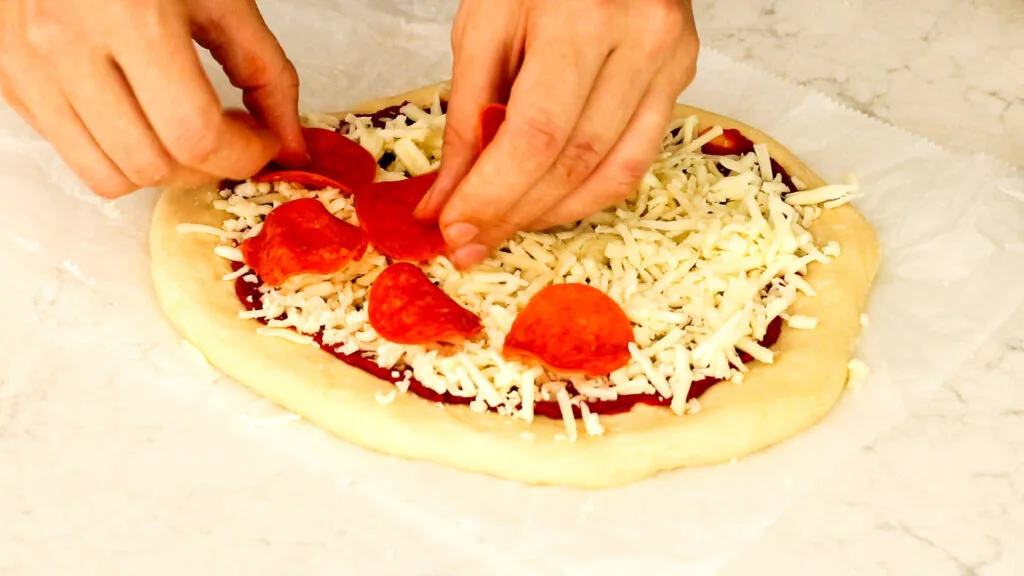
Use a baking sheet to lift the pizza. Open the oven and quickly slide the pizza onto the baking stone. Shut the door again as quickly as possible to avoid losing a lot of heat from the oven.
Bake the pizza for 14-16 minutes, or until the cheese is bubbling and the crust is a deep golden brown.
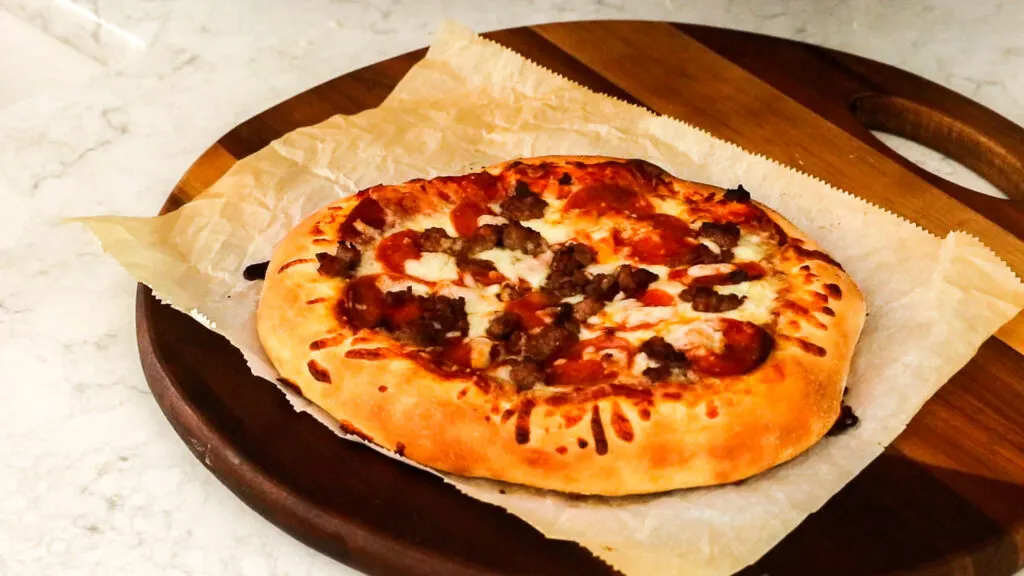
Serving the Hot Pizza
After removing the pizza from the oven, allow it to set for about 5 minutes. Then slice and serve immediately–it’s best when very hot!
If you’re adding any fresh toppings, like basil or arugula, those should be added just before slicing.
Other Tips and Tricks
- If you don’t have a baking stone, that’s totally fine! You can bake the pizza on a regular baking sheet, but it may not bake quite as quickly.
- The pizza dough can be made the day before using. After dividing the dough in two and shaping it into balls, you can wrap them well and place them in the refrigerator overnight.
- Alternatively, you can freeze the dough for up to three months! After wrapping them, place each ball in a zippered freezer bag. Label and date before freezing.
Other Recipes You May Enjoy:
Print
How to Knead Dough for Pizza
Ingredients
- 2 1/2 cup (350 g) bread flour (or other high-gluten flour)
- 2 Tbsp. (25 g) sugar
- 1 teaspoon instant yeast
- 1 teaspoon sea salt
- 1/2 cup whole milk
- 2 Tbsp. olive oil
- 6 Tbsp. room temperature water
Instructions
How to make Pizza Dough
Start by adding all of the ingredients in a mixing bowl. Using a spoon, or your hand, stir until it comes together into a rough dough, for about 2 minutes.
Allow the dough to rest for five minutes, then turn it out onto a well-floured surface.
Using the heel of your hand, press the dough down and away from yourself. You want to stretch across the dough, not just press it down. This creates tension and helps build strength in the gluten strands as you knead.
Fold the dough over and again, stretch it away from yourself. Repeat the step over and over.
As you knead, you’ll feel the dough become smoother and less sticky. It will strengthen and become more springy. This is because the gluten is building longer protein chains and strengthening from your kneading.
Letting the Pizza Dough Rise
Cut the dough in half and roll them both into balls. Smooth oil over each ball and set it on a plate or pan. Cover them with plastic wrap and set in a warm, draft free place.
Allow them to rise until double. This should take a couple of hours, but may take more or less time depending on the temperature of your kitchen.
Shaping the Pizzas
Before shaping the pizzas, preheat the oven to 450° with a rack placed in the middle. If you have a pizza stone, place it in the oven before preheating.
Once the pizza dough has risen, it’s ready to shape. Sprinkle a piece of parchment paper with semolina flour or fine cornmeal.
Place the pizza dough on top and begin to gently press it outward with your hands, turning it to create a circle.
When the dough begins to spring back, lift it up and drape it over your knuckles. Stretch and rotate it over your fingers to stretch it out larger.
Return the pizza crust to the parchment paper and shape it to make sure it’s in a circle, with the edges being slightly thicker.
Baking the Pizzas
Spread a thin layer of pizza sauce over the crust, leaving the thicker part of the dough uncovered. Sprinkle it generously with mozzarella cheese, then add any toppings of your choice.
Use a baking sheet to lift the pizza. Open the oven and quickly slide the pizza onto the baking stone. Shut the door again as quickly as possible to avoid losing a lot of heat from the oven.
Bake the pizza for 14-16 minutes, or until the cheese is bubbling and the crust is a deep golden brown.
Serving the Hot Pizza
After removing the pizza from the oven, allow it to set for about 5 minutes. Then slice and serve immediately–it’s best when very hot!
If you’re adding any fresh toppings, like basil or arugula, those should be added just before slicing.


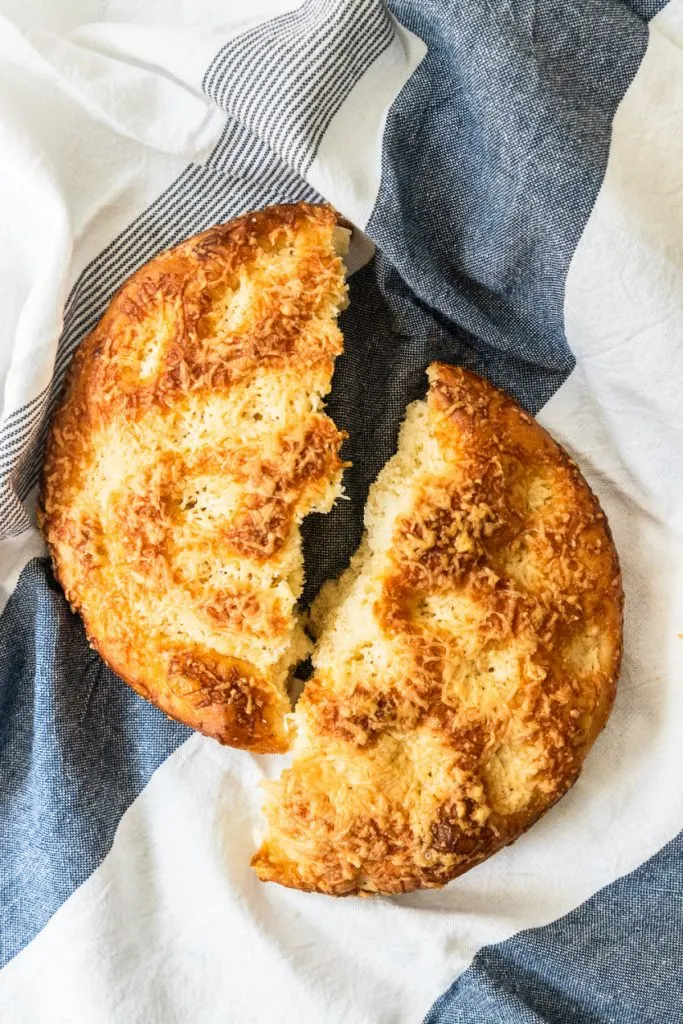

How to Knead Pizza Dough: 10 Proven Steps - Being Pizza
Sunday 22nd of October 2023
[…] To Knead pizza dough can be both a therapeutic and crucial step in the pizza-making process. Properly kneaded dough ensures a uniform texture, proper gluten development, and a crust that’s both chewy and crispy. Whether you’re a beginner or just need a refresher, follow this step-by-step guide to master the art of kneading pizza dough: […]